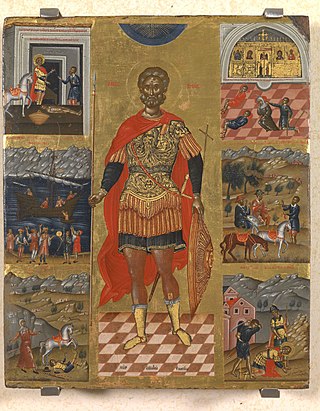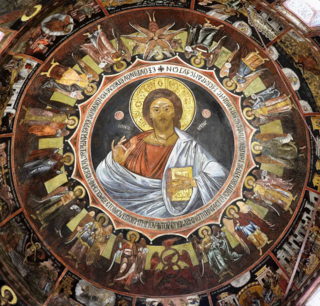Related Research Articles

Thomas Hyde was an English linguist, historian, librarian, classicist, and orientalist. His chief work was the 1700 De Vetere Religione Persarum [On the Ancient Religion of the Persians], the first attempt to use Arab and Persian sources to correct the errors of Greek and Roman historians in their descriptions of Zoroastrianism and the other beliefs of the ancient Persians.

SNARE proteins – "SNAPREceptors" – are a large protein family consisting of at least 24 members in yeasts, more than 60 members in mammalian cells, and some numbers in plants. The primary role of SNARE proteins is to mediate the fusion of vesicles with the target membrane; this notably mediates exocytosis, but can also mediate the fusion of vesicles with membrane-bound compartments. The best studied SNAREs are those that mediate the release of synaptic vesicles containing neurotransmitters in neurons. These neuronal SNAREs are the targets of the neurotoxins responsible for botulism and tetanus produced by certain bacteria.
George of Pisidia was a Byzantine poet, born in Pisidia, who flourished during the 7th century AD.

Gemini (♊︎) is the third astrological sign in the zodiac. Under the tropical zodiac, the sun transits this sign between about May 21 to June 21. Gemini is represented by the twins, Castor and Pollux, known as the Dioscuri in Greek mythology. It's known as a positive, mutable sign.

The National Observatory of Athens is a research institute in Athens, Greece. Founded in 1842, it is the oldest research foundation in Greece. The Observatory was the first scientific research institute built after Greece became independent in 1829, and one of the oldest research institutes in Southern Europe. It was built around the same period as the United States Naval Observatory.

Cretan School describes an important school of icon painting, under the umbrella of post-Byzantine art, which flourished while Crete was under Venetian rule during the Late Middle Ages, reaching its climax after the Fall of Constantinople, becoming the central force in Greek painting during the 15th, 16th and 17th centuries. The Cretan artists developed a particular style of painting under the influence of both Eastern and Western artistic traditions and movements; the most famous product of the school, El Greco, was the most successful of the many artists who tried to build a career in Western Europe, and also the one who left the Byzantine style farthest behind him in his later career.

Syntaxin 11, also known as STX11, is a human gene that is a member of the t-SNARE family.

Syntaxin-2, also known as epimorphin, is a protein that in humans is encoded by the STX2 gene.

George is a masculine given name derived from the Greek Georgios. The name gained popularity due to its association with the Christian martyr, Saint George, a member of the Praetorian Guard who was sentenced to death for his refusal to renounce Christianity, and prior to that, it might have been a theophoric name, with origins in Zeus Georgos, an early title of the Greek god Zeus. Today, it is one of the most commonly used names in the Western world, though its religious significance has waned among modern populations. Its diminutives are Geordie and Georgie, with the former being limited primarily to residents of England and Scotland. The most popular feminine forms in the Anglosphere are Georgia, Georgiana, and Georgina.

Syntaxin-binding protein 5 is a protein that in humans is encoded by the STXBP5 gene. It is also known as tomosyn, after 友, "friend" in Japanese, for its role as a binding protein.
Heinrich von Dissen was a German Carthusian theologian and writer.

Monodendri is a village in the Ioannina regional unit in Greece. It is part of the municipal unit of Central Zagori in the Zagori region, and is located 41 kilometres (25 mi) north of the city of Ioannina.

Syntaxin 3, also known as STX3, is a protein which in humans is encoded by the STX3 gene.
Munc-18 proteins are the mammalian homologue of UNC-18 and are a member of the Sec1/Munc18-like (SM) protein family. Munc-18 proteins have been identified as essential components of the synaptic vesicle fusion protein complex and are crucial for the regulated exocytosis of neurons and neuroendocrine cells.
Francesco Capuano Di Manfredonia was an Italian astronomer, professor, and member of the clergy. Up until the 1880s there wasn't a lot known about Capuano, and the little bit that was known was derived directly from his printed works.

The Crucifixion is a tempera painting by Andreas Pavias, who was active in Crete during the second half of the 15th century and is considered part of the Cretan School. It is now in the National Gallery of Greece. The painting influenced countless arts. Georgios Klontzas, Emmanuel Lambardos, Ioannis Moskos created similar works. Pavias introduced multiple figures to his Crucifixion. Georgios Klontzas began to employ a similar method in his famous work In Thee Rejoiceth. A work that was emulated by Theodore Poulakis and Franghias Kavertzas. The painting exhibited characteristics of the traditional maniera greca and the Venetian style.
The Antidotarium Nicolai, also known as the Antidotarium parvum or small antidotarium, was a late 11th or early 12th-century Latin book with about 150 recipes for the creation of medicines from plants and minerals. It was written in the circles of the Schola Medica Salernitana, the center of European medical knowledge in the High Middle Ages. It was based in part on the Antidotarium of Constantine the African, an 11th-century work also written in Salerno which was itself partially a translation of older Arabic works. It has been called "without doubt one of the most influential medical texts in medieval literature", "the essential pharmacopeia of the Middle Ages" and "the bible of medieval practical pharmacy". It was often coupled with the Circa instans, another 12th-century compendium of less complex medicines.

Georgios Markou also known as Georgios Markou of Argos (Greek: Γεώργιος Μάρκου ο Αργείος. He was a Greek fresco and icon painter. He was active during the Greek Baroque and Rocco periods. He was an artistic representative of the Neo-Hellenikos Diafotismos. He was one of the few Greek painters that worked outside of the Ionian Islands. Other painters that worked outside the Ionian Islands were Christodoulos Kalergis and Makarios. They were also fresco painters. Other Greek fresco painters that traveled all over Greece were Fragkos Katelanos, Theophanes the Cretan, and Frangos Kontaris. Markou was also one of the few prominent painters to have painted in Athens. His surviving works can be found all over the ancient city. He also completed works on the island of Salamina. Three icons survived and countless frescos exist at seven different sites. Some of the frescos are in very good condition. His most notable frescos are at the Monastery Faneromeni, Salamina, Greece.
Nuhrā d-Tešmeštā ʿEdtānāytā, better known by its Latin title, Expositio officiorum ecclesiae, is an anonymous Syriac commentary on the East Syriac liturgy. Its author is usually referred to as Pseudo-George of Arbela. The work is dedicated to a certain Daniel.

Georgios Konstantinos Vouris (Greek: Γεώργιος Κωνσταντίνου Βούρης; aka Georg Konstantin Bouris was a Greek astronomer, physicist, mathematician, author, and professor. He was a pioneer in 19th-century Greek astronomy. Vouris lobbied tirelessly to create an astronomical observatory in Athens. He was the first director of the National Observatory of Athens. It was completed in 1846. Greece reconnected with its Astronomical roots. It was the first time since antiquity that a country named Greece played a significant role in Astronomy. He was the first author to publish a university textbook in the field of mathematics since the inception of the new country.
References
- ↑ Georgios Chrysococca, Expositio In Syntaxin Persarum, 137 foll., Leiden University Library (Bibliotheca Universitatis Leidensis, Codices Manuscripti, v. 2).
- John Hudson; Henry Dodwell (eds.), Geographiae veteris scriptores graeci minores, Oxford 1698-1717.